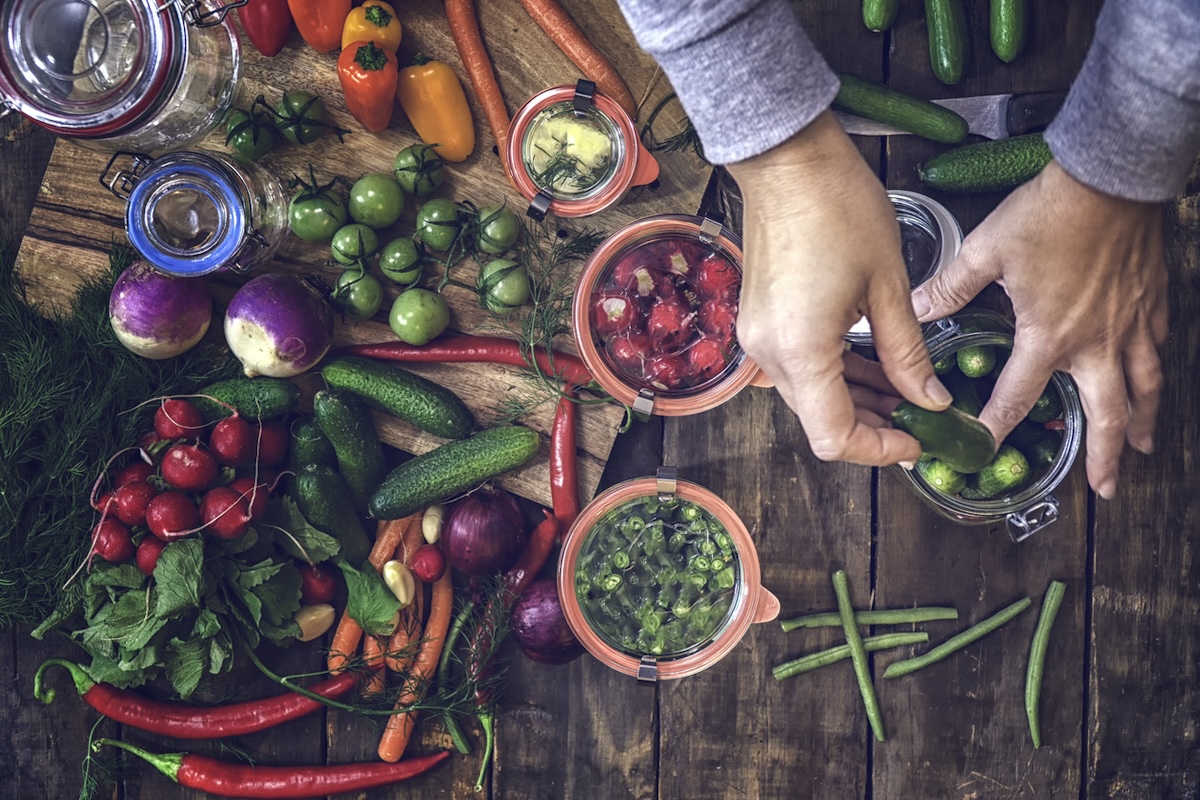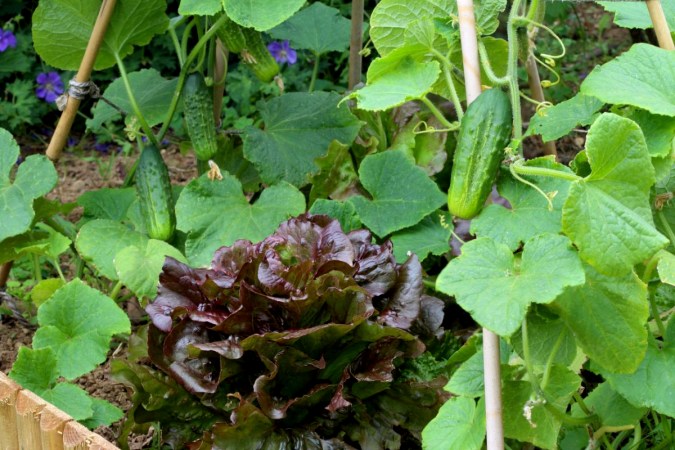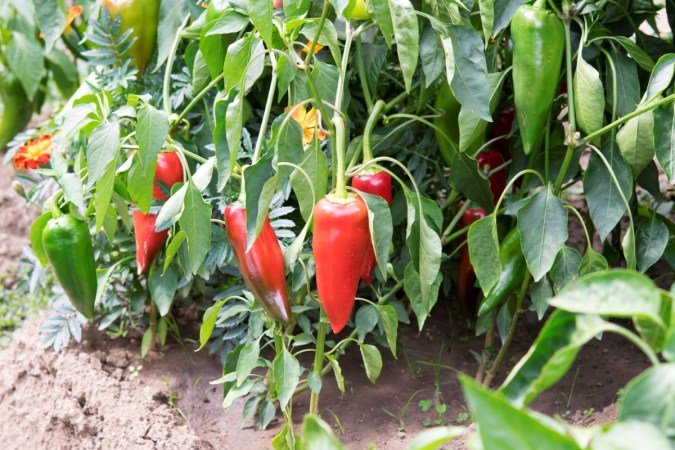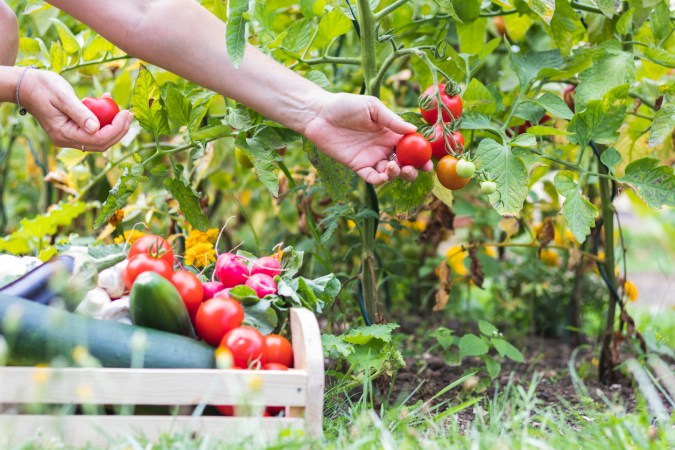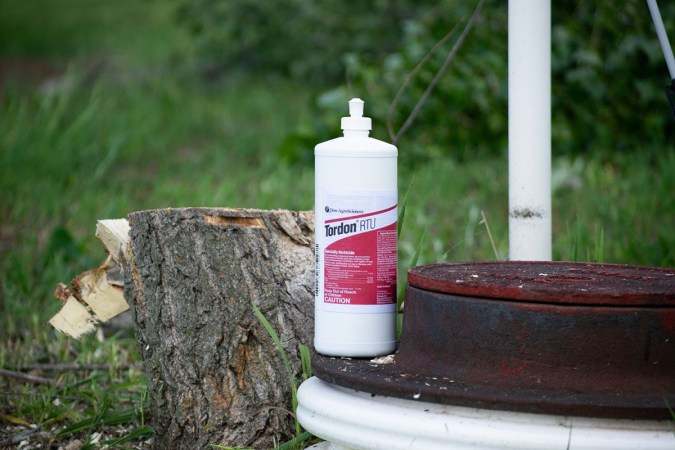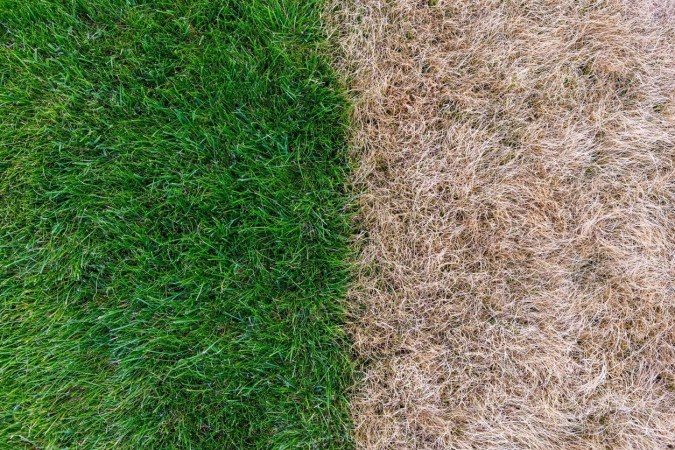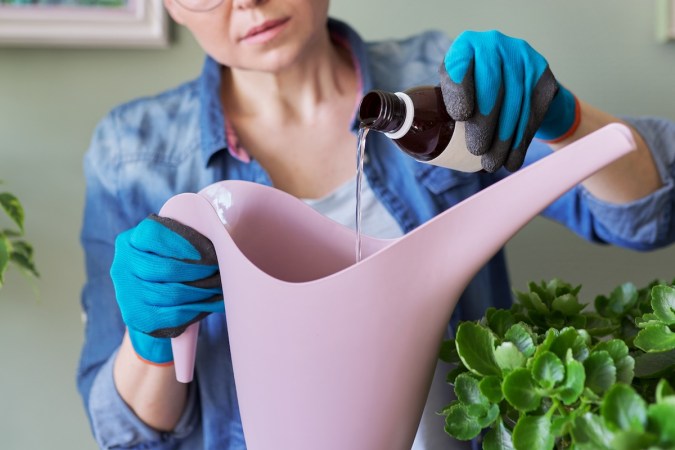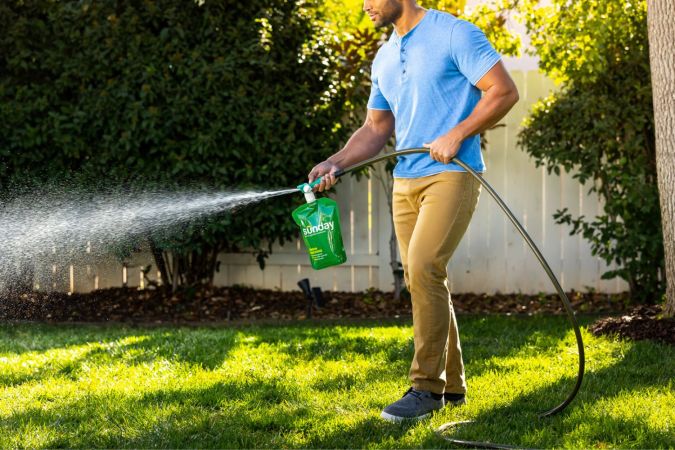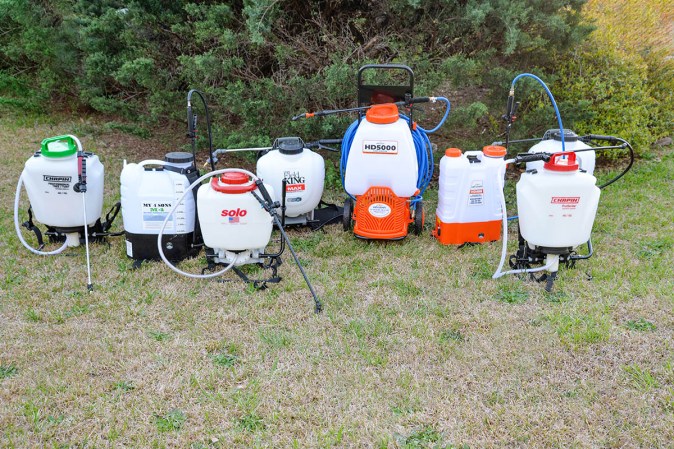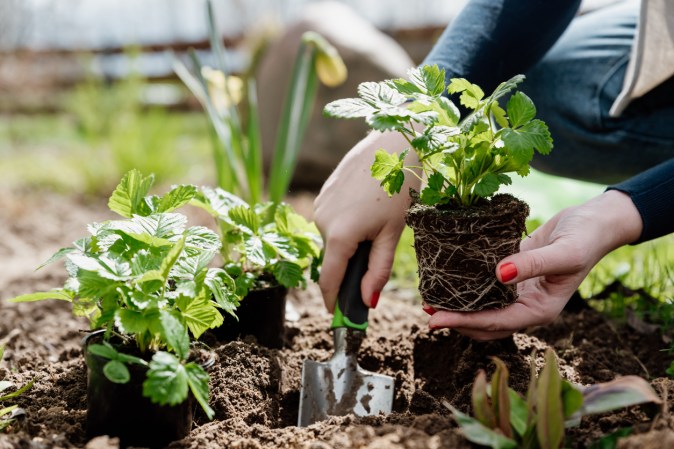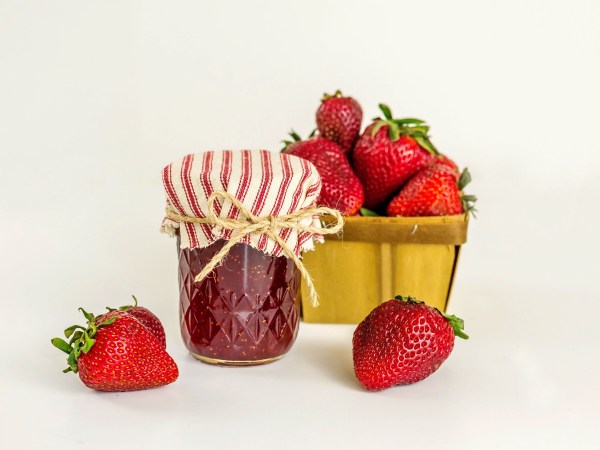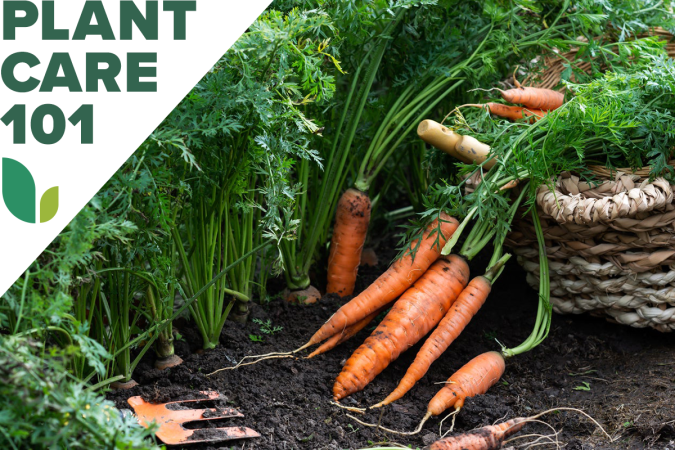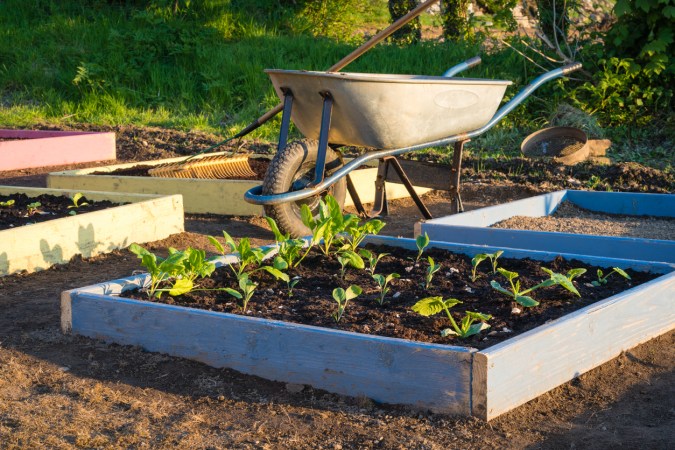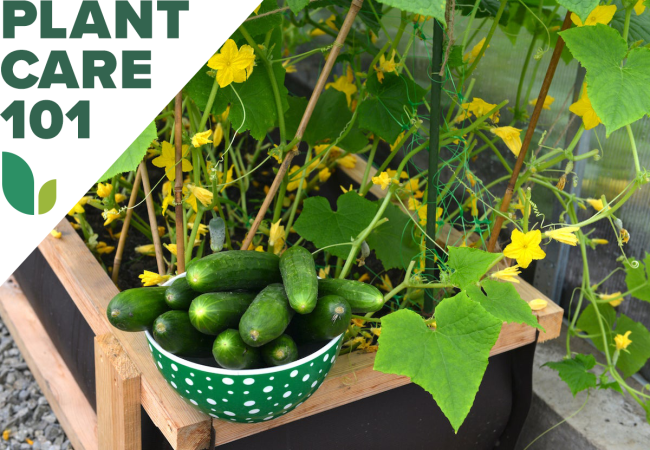We may earn revenue from the products available on this page and participate in affiliate programs. Learn More ›
Water-bath canning is a cost-effective alternative to pressure canning. But because water-bath canning is safe and effective only with foods that are naturally high in acid, or with foods to which an acid is added, particular canning vegetables work better for this process than others. If the lure of homegrown, home-preserved foods is strong, it’s important to understand which easy-to-grow veggies you should plant.
At harvest time, prepare your canning supplies and empty out a shelf in your pantry. You’re going to need plenty of space to store all the canned goods you’ll make from these veggies!
1. Cucumbers
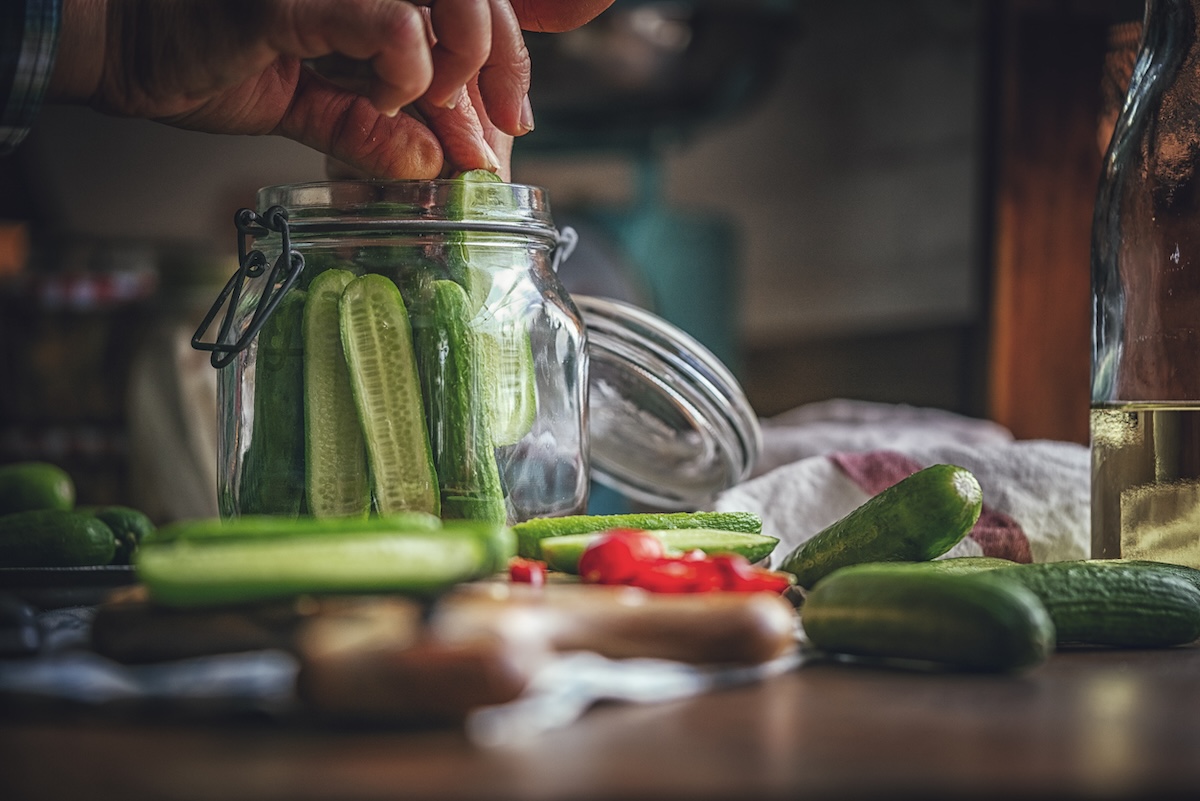
Sour, crispy, and offering a fantastic crunch, cucumber pickles are a savory treat that can be used to enliven burgers, sandwiches, and more. Not only are cucumber pickles easy to water-bath can, but they can be flavored in different ways to create treats such as bread and butter pickles and dill pickles. Slicing cucumbers can technically be used for canning, but pickling cucumbers are a better option since they have thinner skins and their small size makes them easy to squeeze into canning jars!
Best for: Making pickles and relish
Our Recommendation: National Pickling Cucumber Seeds at Amazon for $4.84
‘National Pickling’ cucumbers produce 5- to 7-inch-long, burpless cucumbers with sweet skins that don’t need to be peeled.
2. Tomatoes
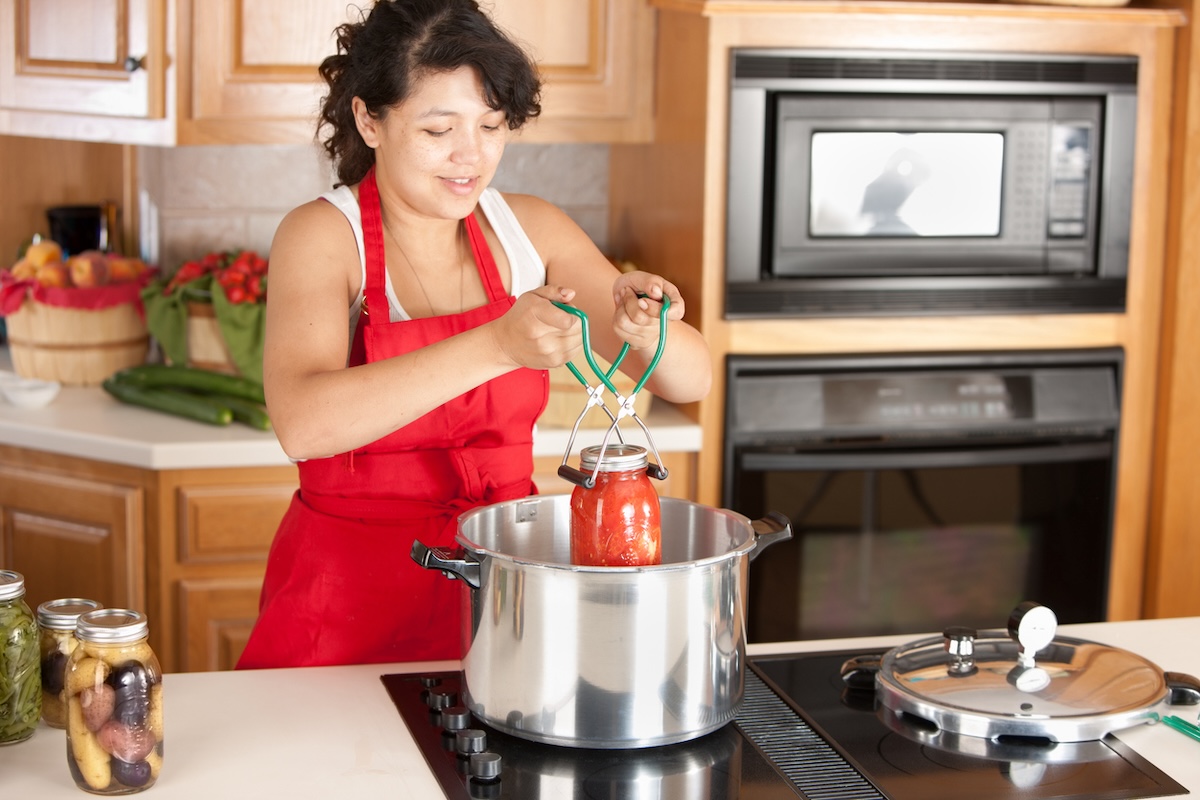
Naturally high in acid, tomatoes are an excellent candidate for water-bath canning. They can be canned whole, stewed, or crushed, or they can be blended into salsas, pasta sauces, or even jam and then canned! Technically, all types of tomatoes can be canned, but paste tomatoes produce the best results since they have minimal seeds and their dense flesh is perfect for meaty pasta sauces and hearty salsas. As with other crops, always follow a reliable recipe when canning tomatoes, as tomatoes have variable acidity levels and they might need to be peeled and canned with an added acid, like lemon juice, for safety.
Best for: Canned tomatoes (whole, crushed, or stewed), salsas, pasta, and pizza sauces, tomato jam, chutney
Our Recommendation: San Marzano Tomato Seeds at Amazon for $4.85
Descended from tomatoes grown on the slopes of Mt. Vesuvius, ‘San Marzano’ paste tomatoes have a sweet taste and meaty flesh.
3. Green Beans
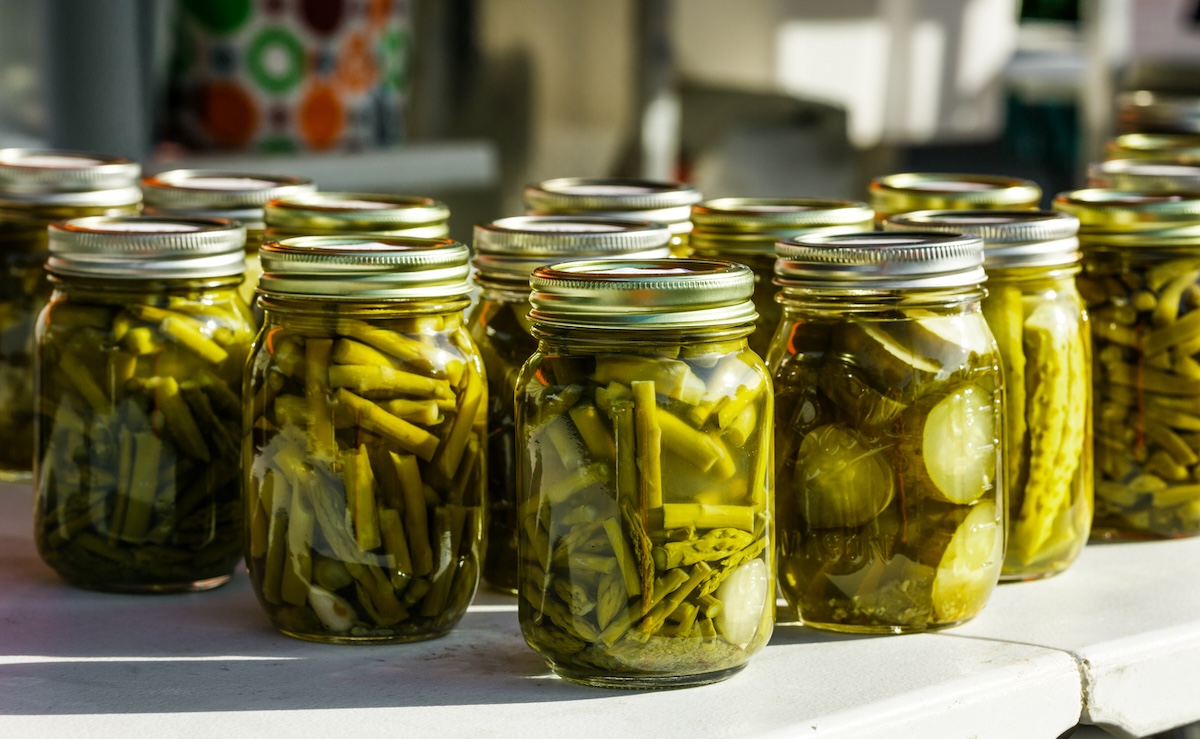
While green beans and wax beans are low-acid veggies, they become high acid foods with added vinegar and they can be canned just like cucumber pickles. The most classic way to can green beans is with some fresh dill and other spices to make the ever-popular dilly beans. For a larger harvest, pick green beans every day or two!
Best for: Dilly beans
Our Recommendation: Jade Green Bean at Amazon for $7.95
‘Jade’ green beans are prolific producers of 6 to 7” long, stringless bean pods.
4. Onions
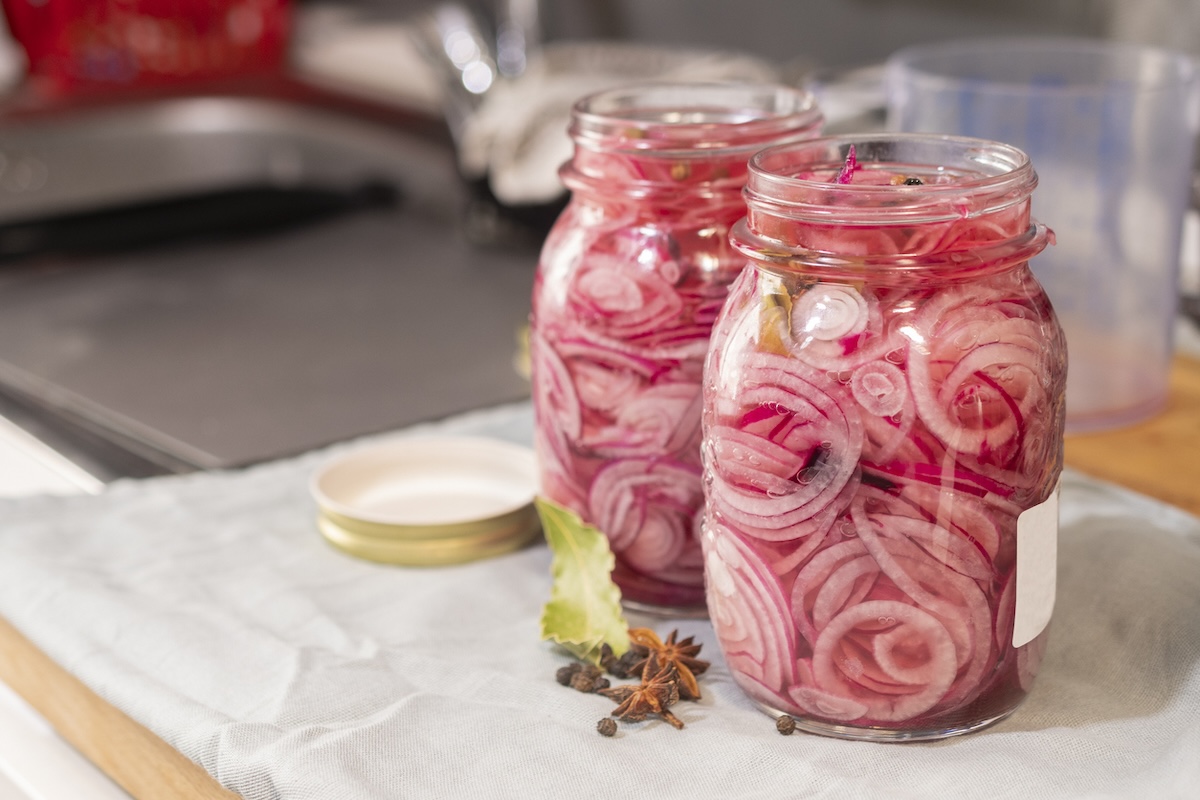
Red, white, yellow, or sweet onions can be preserved in a root cellar, stored in the freezer, or pickled and canned with a water bath canner. Onions are slow growers that are typically planted in spring and harvested when their necks start to dry and their leaves begin to droop. After harvesting, onions can be chopped, diced, or sliced for pickled onions or they can be mixed with tomatoes and peppers to make salsa.
Best for: Pickled onions, salsas, chutney
Our Recommendation: Mixed Red, White, and Yellow Onion Sets at Amazon for $11.99
This mixed onion bulb set contains 40 onion bulbs in a variety of colors to suit any recipe!
5. Peppers
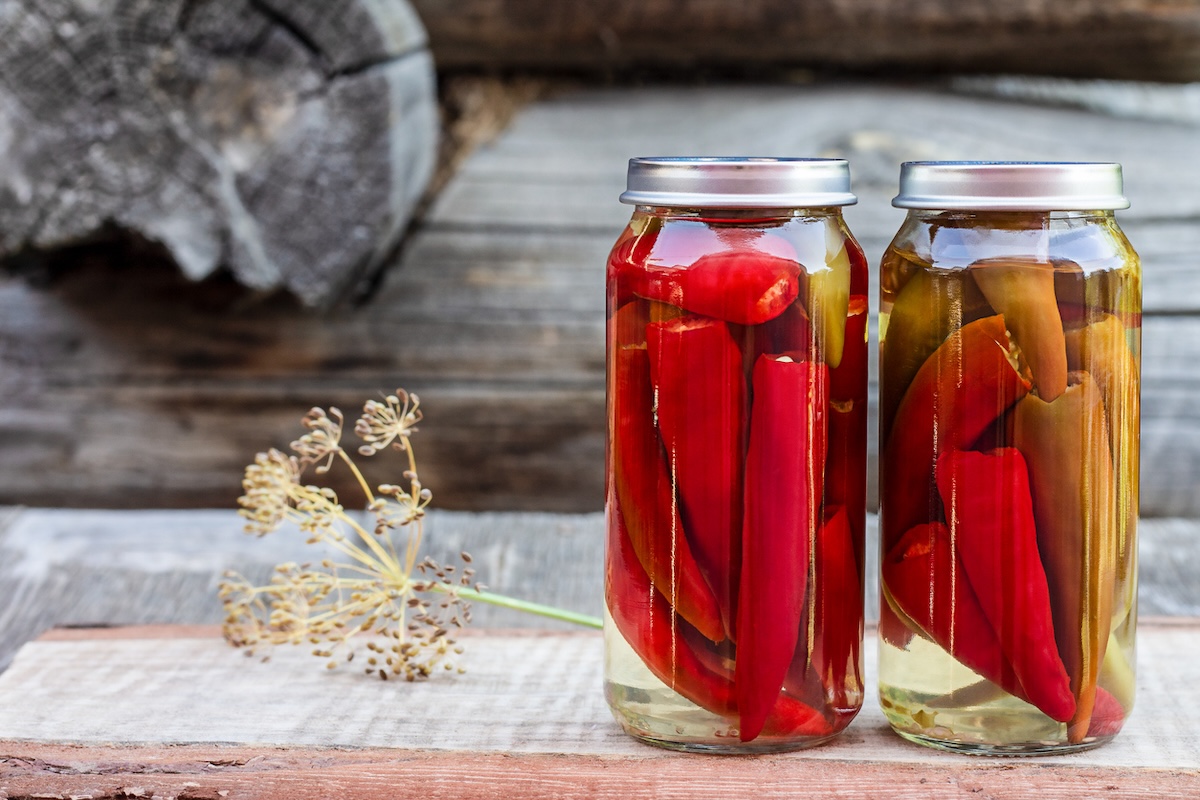
Both mild and spicy peppers can be preserved with water-bath canning as long as the recipe contains vinegar for extra acidity. The most classic way to can peppers is by pickling them on their own, but bell peppers and chilis can also be blended into salsas, relishes, and chutneys.
Best for: Pickled peppers, salsas, chutney, hot pepper jelly, pepper relish
Our Recommendation: Sereniseed 10-Pack of Assorted Pepper Seeds at Amazon for $9.99
Grow peppers of various heat levels with this mixed pack of peppers containing Anaheim, Thai hot chilis, and other popular pepper types.
6. Beets
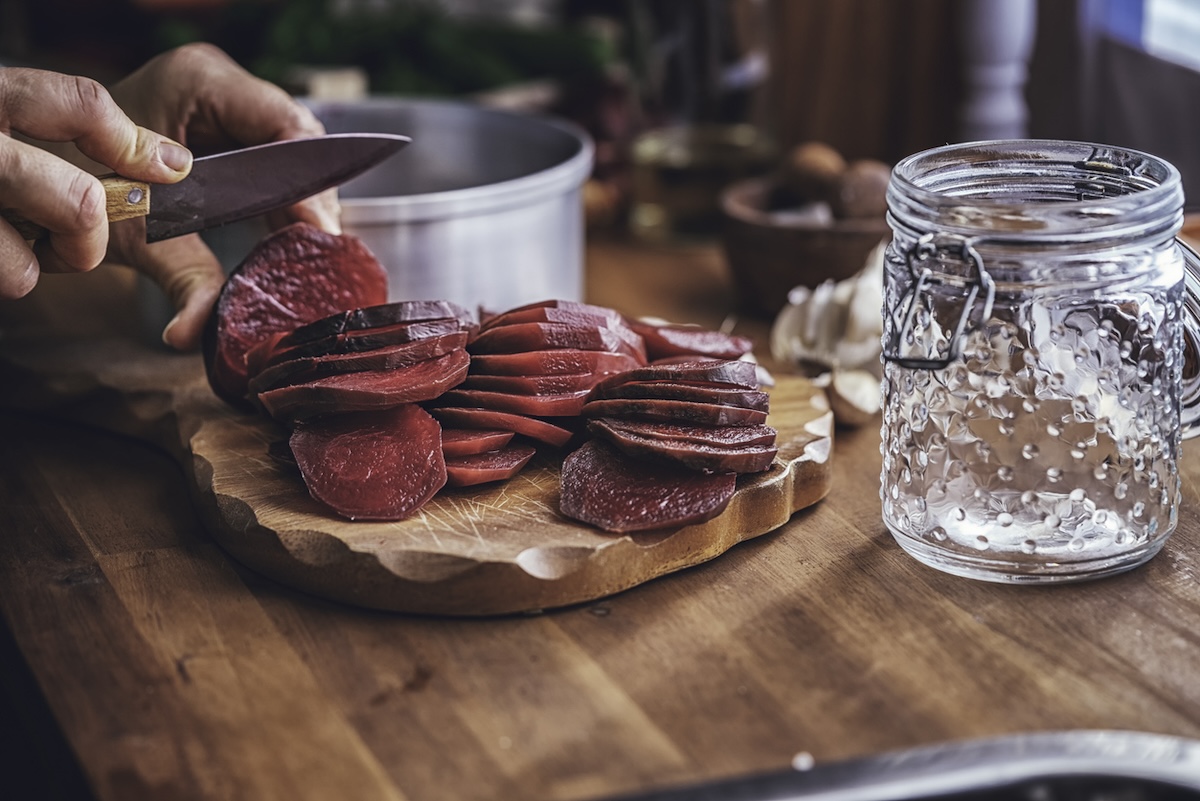
Tangy, sweet, and spiced up with warm flavors like cloves, pickled beets are an autumnal treat, but they can also be enjoyed throughout the year. Both full-sized and baby beets can be used to make pickled beets, but larger beets should be cut into pieces to help them fit into canning jars. For safety, beets are typically cooked until tender and peeled before canning.
Best for: Pickled beets, beet relish
Our Recommendation: ‘Detroit Dark Red’ Beet Seeds at Amazon for $4.85
Heirloom ‘Detroit Dark Red’ beets are particularly popular with home canners thanks to their uniform, deep-red coloration.
7. Corn
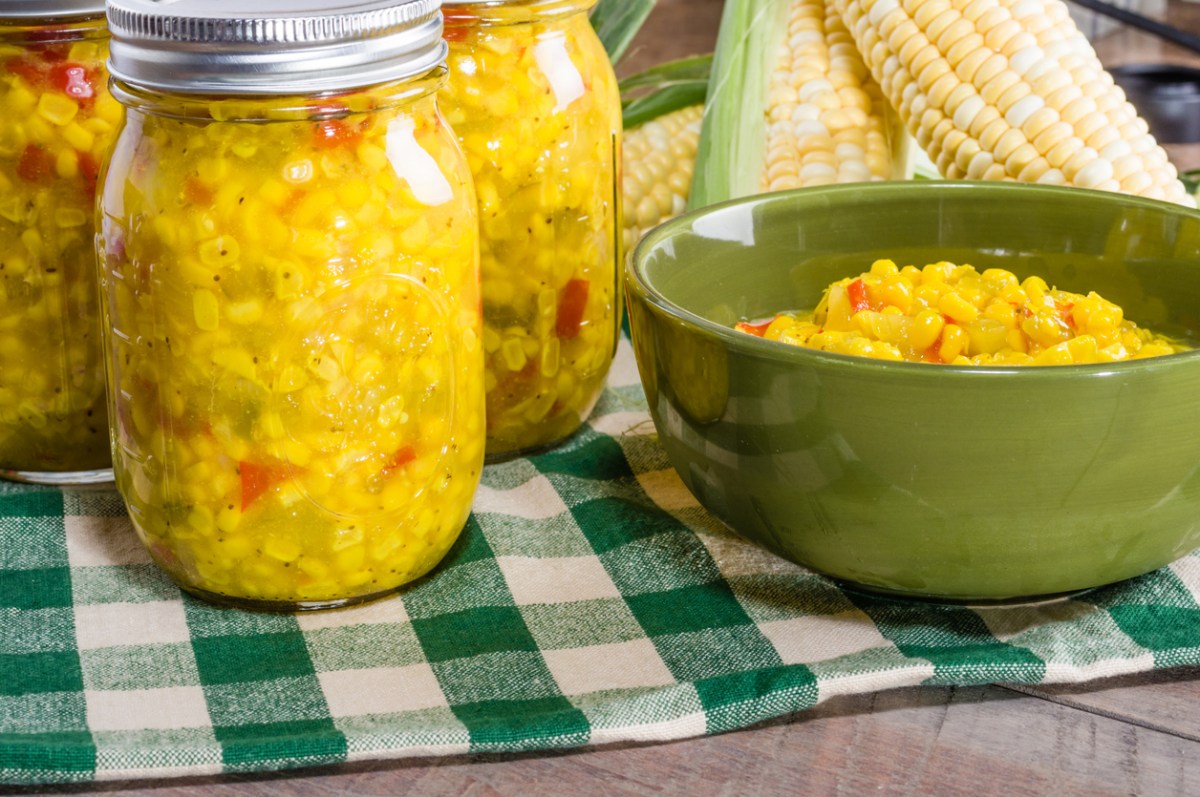
Zingy corn relish or spicy corn salsa can be water-bath canned with the addition of a vinegar base. Before canning, corn kernels should be removed from the cob with a sharp knife. This is much easier if you place corn cobs in the center of a bundt pan and allow the falling kernels to accumulate inside the pan!
Best for: Corn salsa, corn relish
Our Recommendation: Peaches and Cream Sweet Corn Seeds at Amazon for $9.99
‘Peaches and Cream’ corn boasts a sweet flavor and white and yellow kernels that can be eaten straight off the cob or preserved with canning.
8. Radishes
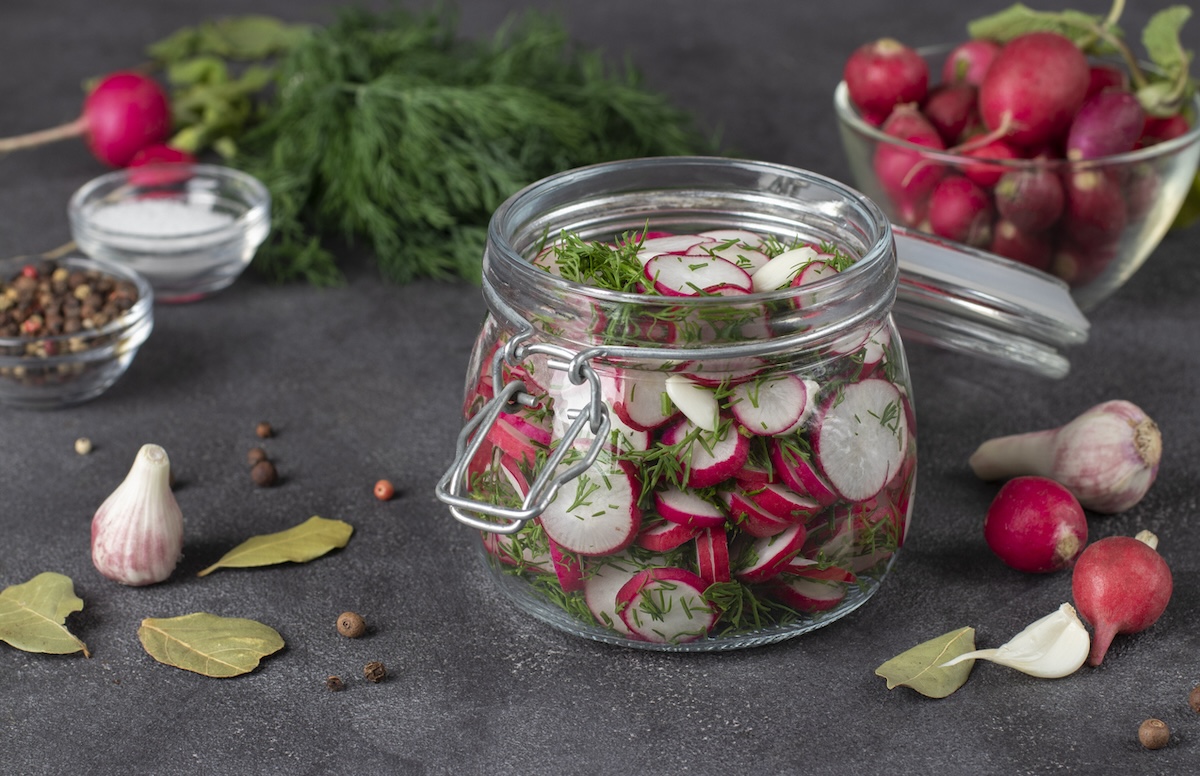
All types of radishes can be preserved with pickling and canning, which helps to accentuate their mild flavor and makes them shelf stable for a year or more. For a larger harvest of radishes, succession-sow radish seeds every few weeks and grow winter radishes and daikons for a late season harvest. Radishes should be harvested when their leaves are 6 to 8 inches tall and their “shoulders” have started to rise above the soil.
Best for: Pickled radishes, do chua (Vietnamese pickled carrots and daikon radish)
Our Recommendation: ‘Minowase’ Daikon Radish Seeds at Amazon for $4.94
Daikon radishes, like ‘Minowase’, are often used to make do chua—a Vietnamese pickled radish recipe that includes carrots, daikons, sugar, and vinegar.
9. Carrots
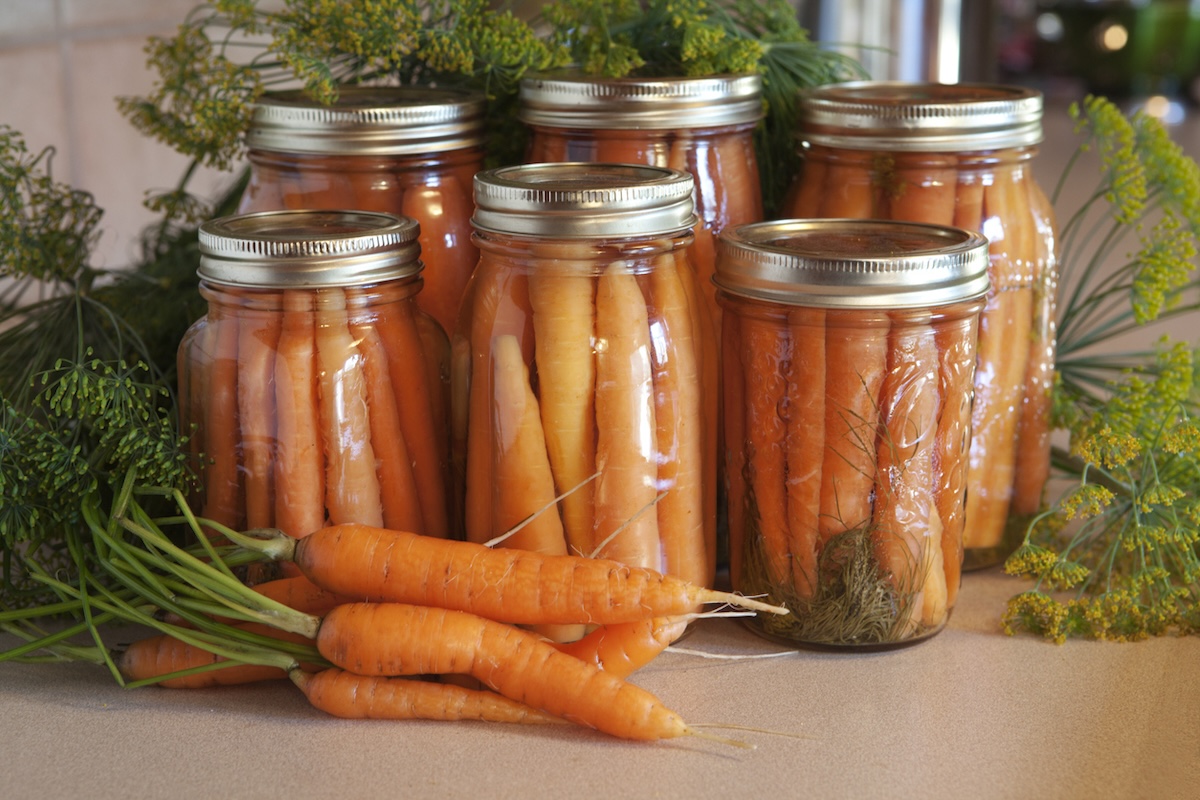
Carrots can be pickled and canned with other canning vegetables or they can be canned with a bit of garlic and dill. Whether you slice, dice, or chop carrots, always peel carrots before canning, because their irregular surface can contain bacteria.
Best for: Pickled carrots
Our Recommendation: Rainbow Carrot Seeds at Amazon for $5.99
This carrot seed mix contains purple, pink, orange, and white carrots for a rainbow carrot pickle.
10. Garlic
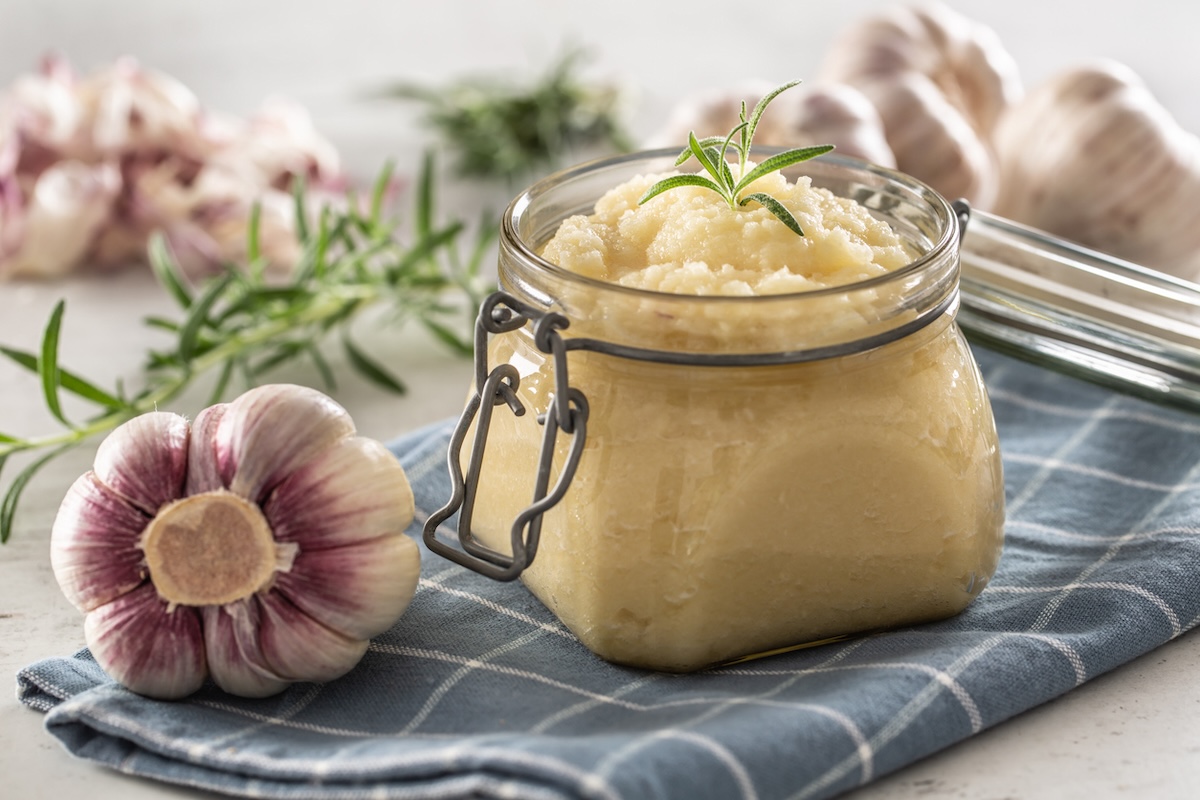
Both hardneck and softneck garlic can be pickled and canned or blended into other canning recipes, like pasta sauces and dilly beans. Just be sure to peel garlic before canning. If you’re hoping to add garlic to your water-bath-canned delights, be sure to plan ahead. Garlic cloves are typically planted in autumn and harvested the following summer.
Best for: Pickled garlic, pasta and tomato sauces, dilly beans
Our Recommendation: Siberian Hardneck Garlic at Amazon for $10.99
Hardneck garlic can be used fresh or canned, but it’s also the garlic variety to grow if you want to harvest garlic scapes.
Prices accurate as of publication date 4/19/2024.
